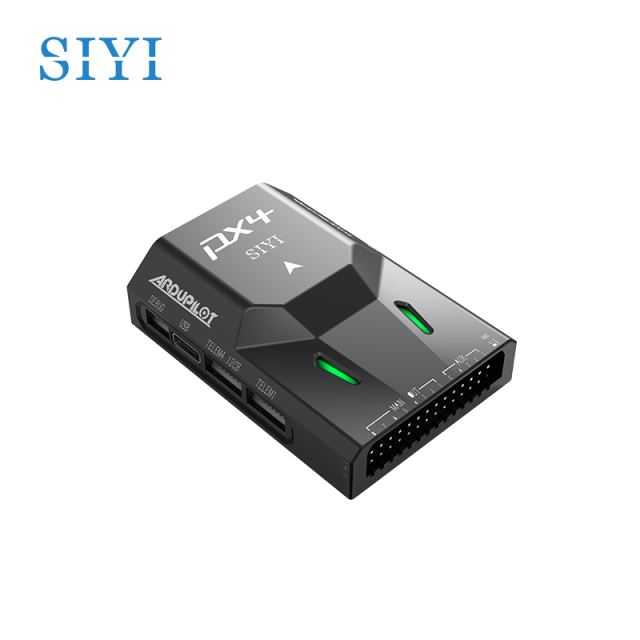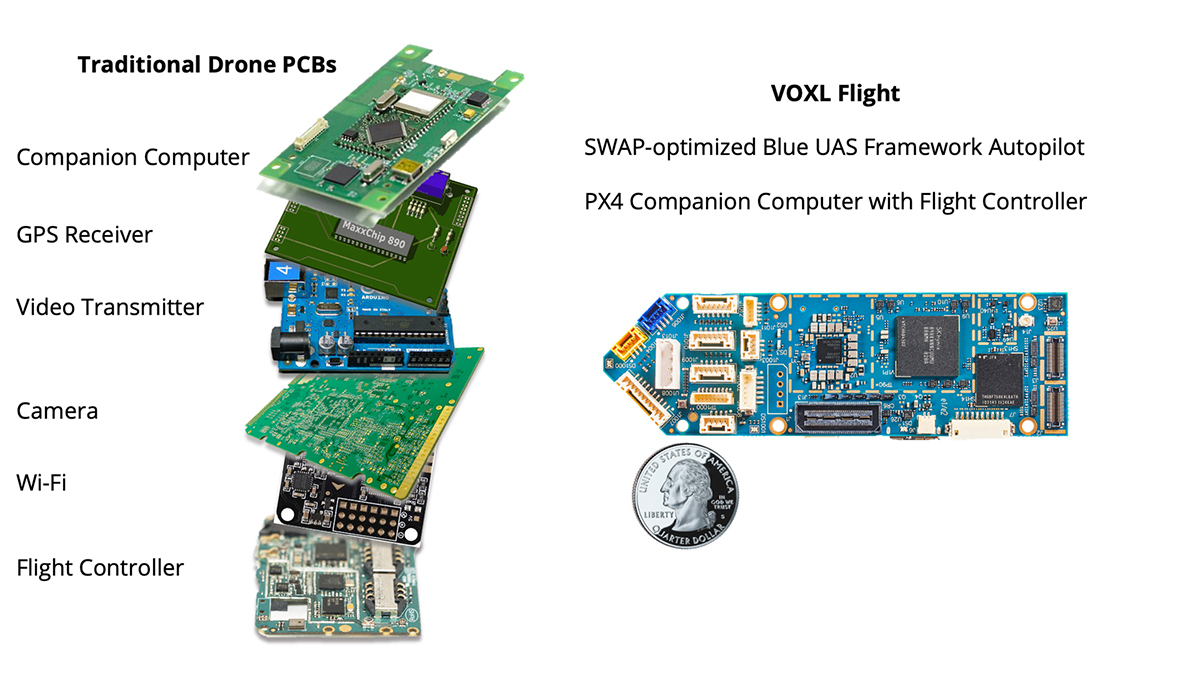Dependable Drone Navigating with SparkNavi Drone Flight Controller and GNSS/INS Made in Taiwan
Dependable Drone Navigating with SparkNavi Drone Flight Controller and GNSS/INS Made in Taiwan
Blog Article
Discovering the Role of Drone Flight Controllers in Enhancing Trip Security and Navigation Efficiency
The innovation of drone technology has dramatically raised the importance of trip controllers, which function as the mind of these airborne cars. By integrating real-time information from an array of sensors, trip controllers enhance flight stability and navigation effectiveness, guaranteeing that drones can operate efficiently also in intricate environments. This discussion will explore the essential elements that add to these renovations, as well as the implications for the future of autonomous trip. What innovations lie ahead that could even more transform the abilities of drone trip controllers?

Recognizing Flight Controllers
Flight controllers are indispensable parts in the performance of drones, functioning as the minds that take care of and support trip operations. These sophisticated devices process data from numerous sensors, including accelerometers, gyroscopes, and GPS, to make sure that the drone preserves its designated trip path. The flight controller translates this data and implements commands based upon pre-defined formulas, allowing the drone to respond to environmental changes, such as wind or obstacles.
The primary feature of a trip controller is to keep stability during flight. It attains this by making real-time changes to the drone's electric motors and control surfaces, guaranteeing balance and control. Additionally, modern-day trip controllers integrate advanced features such as waypoint navigating, permitting for automated flight paths and boosted functional effectiveness.
Understanding the architecture of trip controllers is vital for both specialists and enthusiasts. They usually include a microcontroller, firmware, and numerous user interfaces for sensor input and interaction. As innovation advancements, trip controllers have become extra small and capable, integrating artificial knowledge to enhance decision-making procedures and adjust to intricate flight circumstances. This development represents a pivotal development in the drone sector, paving the means for a lot more sophisticated applications and more secure procedures.
Secret Components of Flight Stability
Attaining optimal flight security in drones relies upon a number of vital components that operate in show to make certain smooth and controlled procedures. Central to this security is the trip controller itself, which refines data from various sensors to preserve the wanted trip perspective. This includes accelerometers and gyroscopes that measure movement and positioning, permitting for real-time changes to the drone's placement.
Another vital part is the digital rate controllers (ESCs), which manage the power supplied to the electric motors. By carefully adjusting electric motor rates in feedback to trip controller commands, ESCs aid maintain balance and counteract disturbances brought on by wind or abrupt activities.
In addition, the layout of the drone's frame plays a pivotal role in flight stability. A well-structured structure decreases resonances and boosts the total wind resistant account, adding to smoother flight qualities. Finally, the integration of advanced formulas within the trip controller aids in predictive adjustments, ensuring a adaptable and responsive trip experience.
Together, these parts develop a cohesive system that enhances a drone's security, enabling for accurate handling and enhanced performance in numerous flight conditions.
Navigating Effectiveness Techniques
Performance in navigation is vital for optimizing drone procedures, especially in complex settings. Reliable navigating strategies improve the ability of drones to pass through tough surfaces and avoid challenges, thus boosting functional effectiveness and safety and security.
One popular technique is the application of advanced general practitioners and inertial measurement devices (IMUs) that supply accurate place monitoring and positioning information. These innovations enable drones to calculate optimum trip courses in real-time, taking into account numerous aspects such as wind problems and potential challenges.
Another method entails making use of algorithms for path planning and optimization. Algorithms such as A * and Dijkstra's algorithm can be deployed to establish the most reliable course while minimizing energy consumption and flight time. Integrating maker understanding models can make it possible for drones to adaptively discover from their environments, boosting navigation abilities image source with experience.

Effect On Autonomous Drones
The combination of advanced navigation techniques has actually exceptionally transformed the capacities of self-governing drones, enabling them to run with greater freedom and precision. SparkNavi drone flight controller and GNSS/INS made in taiwan. These improvements are mostly credited to innovative flight controllers that use real-time data handling and sensing unit combination, enabling drones to navigate intricate environments seamlessly
The effect on self-governing drones expands beyond plain navigation; it incorporates enhanced obstacle evasion, boosted security during dynamic problems, and enhanced mission reliability. By leveraging algorithms that incorporate artificial intelligence and artificial knowledge, drones can adjust to changing situations, making informed decisions that optimize their flight paths while reducing risks.
Furthermore, the application of durable flight controllers has assisted in the execution of complex tasks, such as airborne evaluations, distribution services, and farming monitoring, with very little human intervention. This capacity not only simplifies procedures but also decreases human mistake, consequently boosting overall safety.
As a result, the operational range of independent drones has increased substantially, making them important devices in different sectors. Their ability to perform successfully in varied scenarios underscores the top article vital duty that advanced trip controllers play in forming the future of unmanned aerial systems.
Future Patterns in Trip Control
Regularly, advancements in flight control innovation are positioned to redefine the landscape of drone procedures in the coming years. Arising fads indicate a considerable change in the direction of improved expert system (AI) combination, making it possible for flight controllers to refine real-time information more effectively. This advancement will certainly assist in better decision-making capacities, enabling drones to adapt to vibrant environmental problems autonomously.
Moreover, the execution of artificial intelligence formulas is anticipated to boost predictive upkeep, therefore reducing downtime and prolonging the lifecycle of drone elements. This positive technique to maintenance will be essential as drone applications broaden throughout various markets, from farming to logistics.

.png)
Finally, developments in secure interaction protocols will certainly address safety and security and regulatory issues, making sure that drones can operate effortlessly in congested airspaces (SparkNavi drone flight controller and GNSS/INS made in taiwan). Jointly, these trends aim in the direction of a future where flight control systems are not just smarter and a lot more additionally capable however efficient of operating securely in a significantly incorporated airspace
Final Thought
To conclude, drone flight controllers are important to enhancing trip stability and navigation effectiveness via the innovative handling of sensor information. By keeping optimal trip attitudes and employing advanced algorithms for path optimization and challenge evasion, these controllers dramatically contribute to the freedom and operational security of drones. As technology remains to develop, additionally advancements in trip control systems are prepared for, guaranteeing enhanced efficiency and increased abilities in the world of unmanned airborne automobiles.
By incorporating real-time information from an array of sensing units, trip controllers improve flight stability and navigation effectiveness, guaranteeing that drones can operate smoothly even in complicated atmospheres.Flight controllers are essential components in the performance of drones, serving as the brains that maintain and take i thought about this care of flight operations. In addition, modern flight controllers incorporate innovative features such as waypoint navigation, permitting for automated flight courses and improved functional performance.
Central to this security is the trip controller itself, which refines information from different sensing units to preserve the wanted trip perspective.In verdict, drone flight controllers are essential to improving flight security and navigating effectiveness via the advanced handling of sensor information.
Report this page